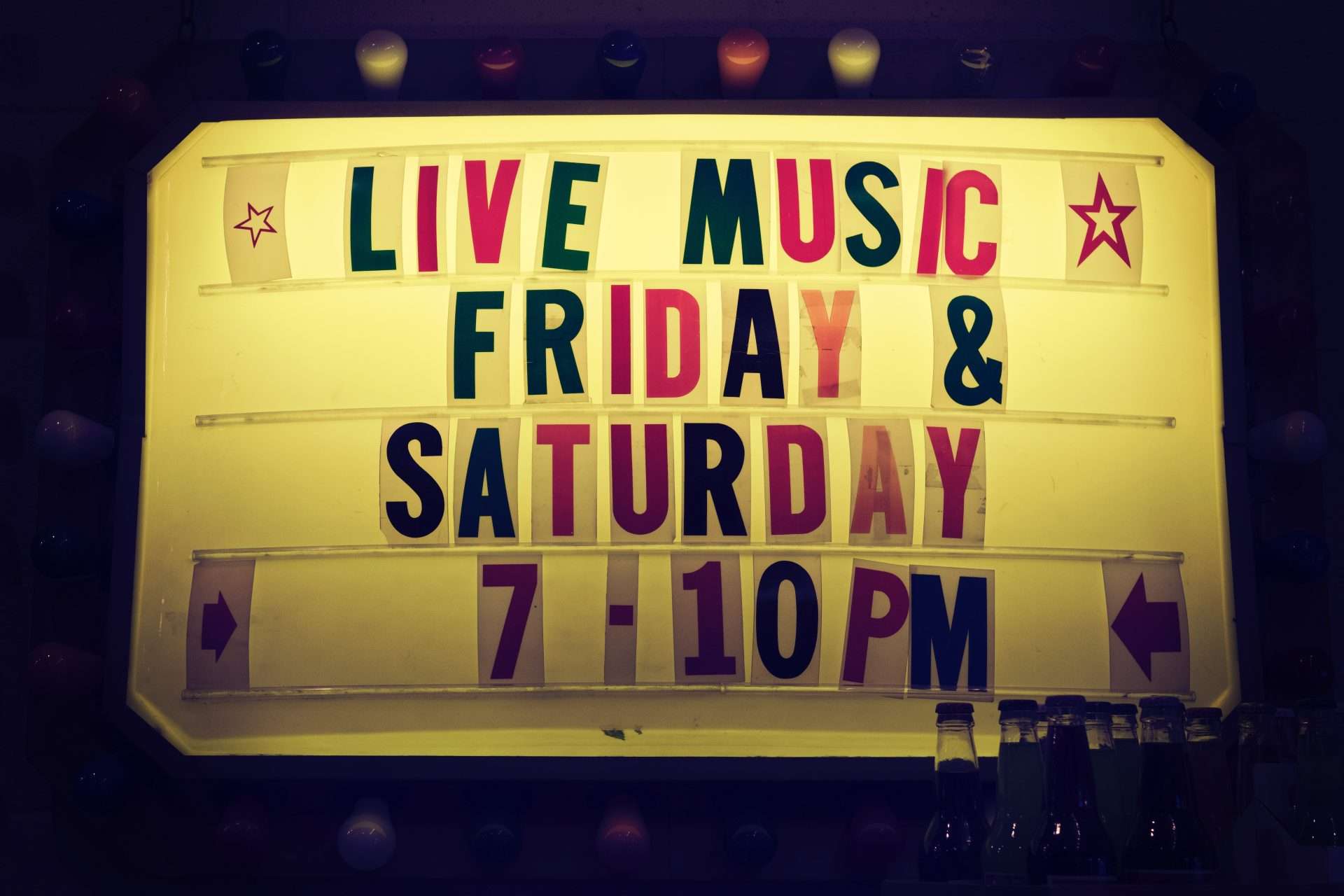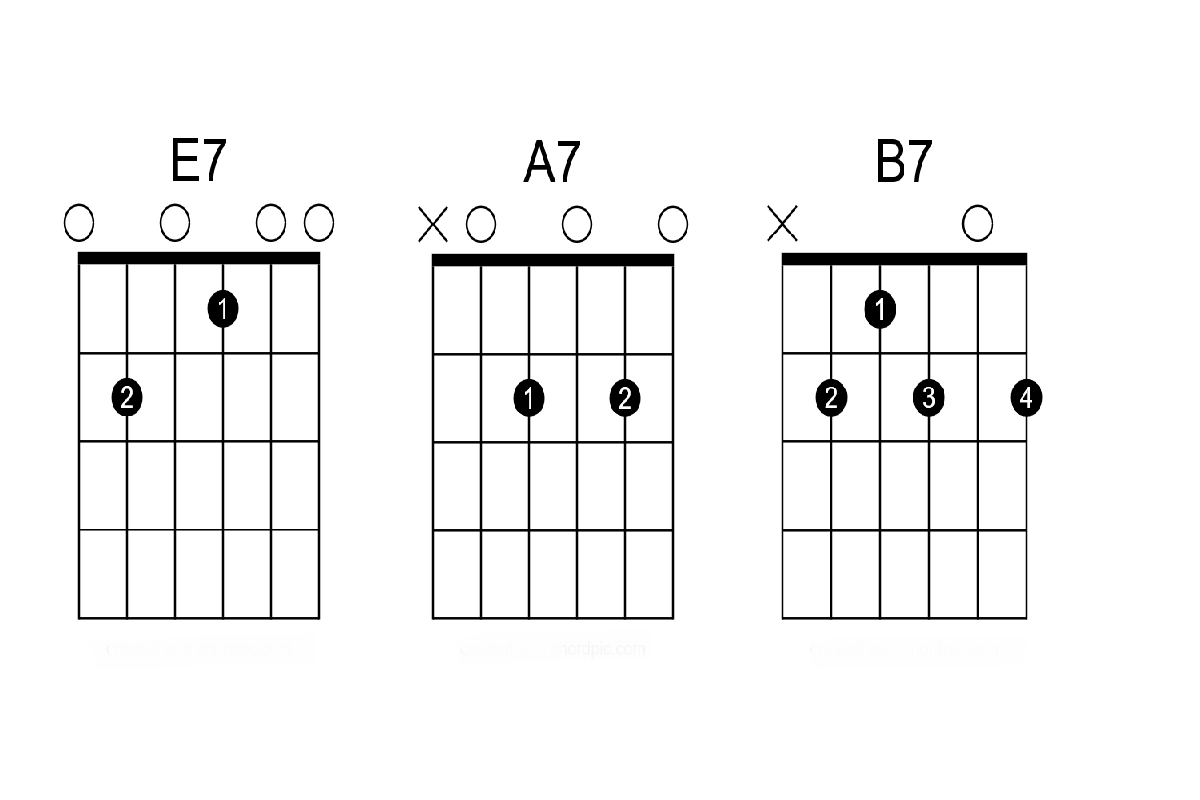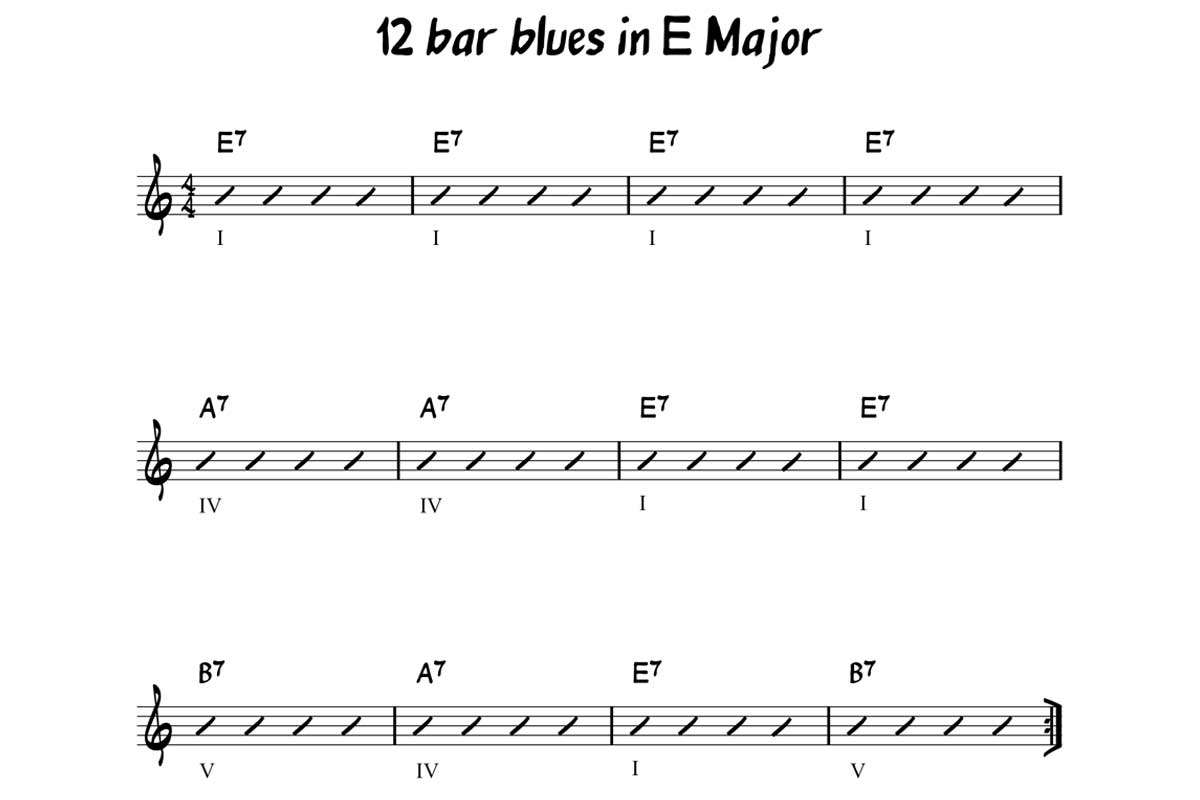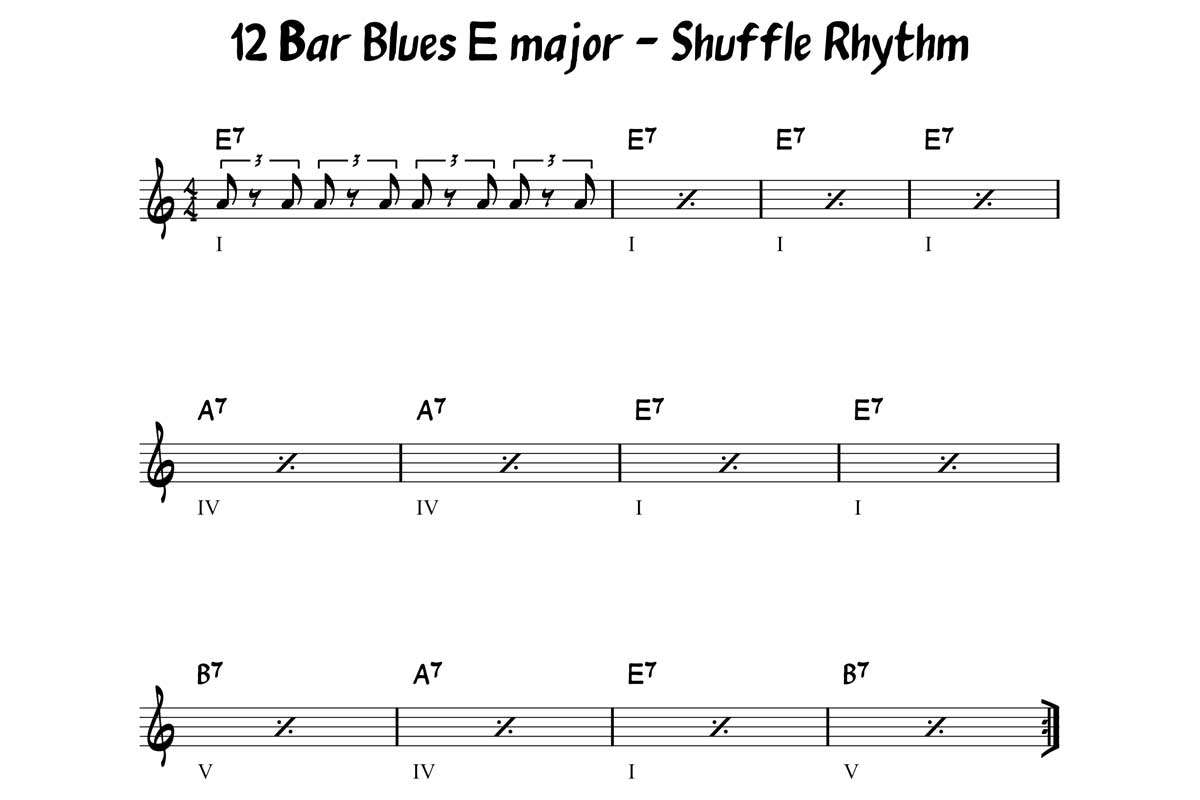The blues is an American musical genre dating back to the 1860’s. Later branches of American music such as jazz and rock n roll are intertwined with elements of blues. Because of its large influence on modern music, blues is a crucial part of a guitarist’s lexicon. This article will teach you everything you need to get started playing blues chords and understanding the elements that make up this unique artistic genre.

Blues Chords
There are no unique chords dedicated solely to blues. Blues uses many basic guitar chords that you may already know, such as major chords, minor chords, 7th chords, extended chords (jazz chords).
However, the most distinctive element that gives blues its classic sound is its usage of dominant chords. Blues is an exceptional genre in the way that replacing your typical major chord for a dominant 7 chord is common practice. In fact, it is not uncommon to see a progression played entirely with dominant 7 chords!
Below are open positioned dominant 7th chords in the key of E major, a common blues key for guitarists. The most commonly used chords in blues are the I, IV, and V chords. In E major, those chords are E7 – A7 – B7.

Note: While we are only including open position chords for the sake of introductions, we encourage you to try to play the blues using barre chords or other chord voicings you like!
One more thing, guitarists often default to E major and E minor when playing the blues. But A, C, and G are other popular keys. Try playing the I – IV – V – I progression in all keys. You never know when you’ll get the opportunity to jam out with saxophonists or trumpet players, who prefer keys such as Bb and Eb.
Blues Chord Theory
If you are unfamiliar with dominant chords, I will give you a quick rundown:
Dominant 7th chords are made from stacking of a major triad with a minor 7th; The intervals of a Root, M3, P5, b7. Dominant 7 chords are full of tension, which is what gives this genre it’s “bluesly” characteristic.
12 Bar Blues Progression
Blues is a really straightforward genre. This simple structure called “12 Bar Blues” allows musicians a lot of freedom for expression. The 12 bars are broken up into 3 lines with 4 bars each. The last line is referred to as the “turnaround” because it sets up the listener to anticipate the repeat of the progression.
How it works is you play the I chord for 4 bars, then the IV chord for two, the I chord for two, then the turnaround is V – IV – I – V. Try playing the 12 bar blues in E major.

Shuffle Rhythm
As a rhythm guitarist your most important job is keeping the beat! Jazz and blues players rarely play on the downbeats, and every so often a change is needed to keep things interesting.
When you get tired of straight quarter notes, that’s where the shuffle rhythm comes in.
The shuffle rhythm is the most common rhythm in blues. This rhythm divides every beat into triplets. Playing on up beats along with lots of 8th note rests gives the shuffle rhythm a great blues flow.

Now that you can play this, play along with this Blues in E backing track!
Blues in E (90bpm) : Backing track
Now you’ve got it!
Frequently Asked Questions
What are the three chords used in the blues?
The 3 chords used in the blues are the I – IV – and V chords. Oftentimes all 3 of these chords are played in a dominant quality. This is not always true. You could also play a classic Emaj7 – Amaj 7 – B7. It might lose some of its bluesy tone.
In minor keys, the chords played might be i7 – iv7 – V7.
What are typical blues chords?
Blues chords typically use dominant 7th chords. However, there is no set rule on this; Major chords, minor chords, 7th chords, and extended chords are often used in variation.
What is the basic blues progression?
The basic blues progression is I IV V. This is used in major and minor keys. In E minor, the blues progression would be Em7 – Am7 – B7.
You many be interested in: Minor Chord Progressions
What key is most blues played in?
Guitarists typically play in E major and E minor, since it is what their guitar is tuned to. However, C, D, G, and A are common blues keys as well.
Why do they use 7th chords in blues?
Blues is an exceptional genre that allows its players much musical freedom. The strong tension of the dominant chord gives blues its unique sound. There is really no theoretical explanation for why blues uses dominant 7 chords in such an unconventional way, the answer is simply because it sounds good!
Conclusion
By practicing the simple pattern above, you’ll already know enough to jam as a blues rhythm guitarist.
Blues is an iconic musical genre that dates back to the 1800’s. It was a predecessor to rock n roll, jazz, and R&B. Thus, the three are intertwined. Because the guitar is a staple of these genres, it is important for every guitarist to know a bit of blues, no matter his style.
Blues uniquely replaces major chords with dominant 7 chords. The added b7 gives the progressions a bluesy quality native to the style.
The I – IV – V is the most common blues progression, you have undoubtedly heard it many times. These chords are played in a 12 Bar Blues format that repeats itself with added variations every time. The shuffle rhythm is a triplet strumming style that blues guitarists use to add flair and variation to the chords.
I hope you learned a lot about how to play blues chords today.
You may like: Japanese Chord Progressions
